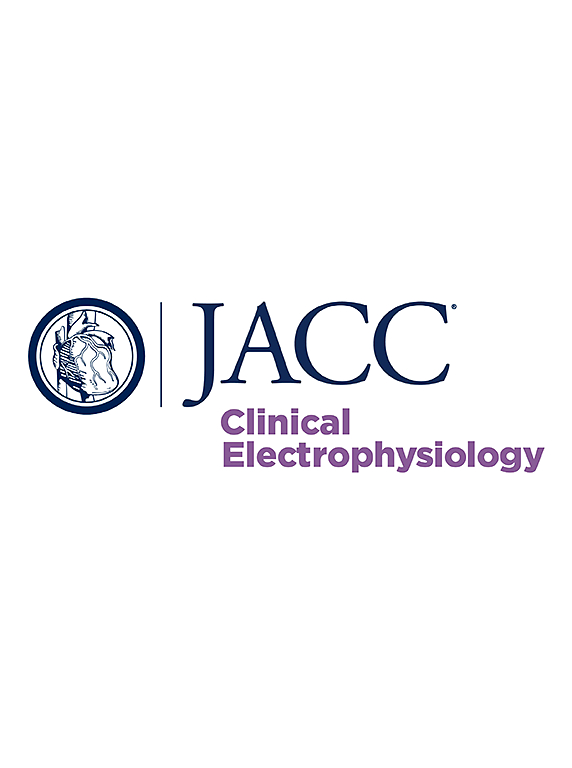Incidence and Clinical Management of Supraventricular Arrhythmias in Patients With Catecholaminergic Polymorphic Ventricular Tachycardia
IF 8
1区 医学
Q1 CARDIAC & CARDIOVASCULAR SYSTEMS
引用次数: 0
Abstract
Background
Smaller studies suggest supraventricular arrhythmias (SVAs) are common in patients with catecholaminergic polymorphic ventricular tachycardia (CPVT).
Objectives
This study aimed to determine the incidence, type, and clinical management of SVAs observed within a large, single-center cohort of CPVT cases.
Methods
The electronic medical records of 206 patients (51% female; average age at diagnosis 21 ± 17 years) diagnosed clinically with CPVT between January 2000 and September 2023 were reviewed for electrocardiographic evidence of SVAs, including atrial fibrillation (AF), atrial flutter (AFL), atrial tachycardia (AT), and supraventricular tachycardia. SVAs were considered clinically significant when sustained for >30 seconds, with or without symptoms, ultimately necessitating clinical evaluation. SVA type, symptoms, and therapeutic efficacy were assessed.
Results
Overall, 17 (8.3%) of 206 patients had evidence of an SVA (AF/AFL in 8, AT in 9, and supraventricular tachycardia in 1 [1 patient experienced both AT and AF/AFL]). The median age at SVA diagnosis was 28 years (Q1-Q3: 16-34 years). A total of 11 (65%) of 17 patients were symptomatic, 3 (27%) of whom experienced inappropriate shocks. All patients were trialed on antiarrhythmics. Owing to drug failure, intolerance, or patient/provider preference; 5 (29%) of 17 patients with SVAs underwent radiofrequency ablation. Notably, over a median follow-up duration of 11 months (Q1-Q3: 5-45 months), 1 SVA recurrence was observed in a patient treated medically.
Conclusions
In comparison with prior studies, the incidence of SVAs in this large, single-center CPVT cohort was substantially lower (8.3% vs 26%-35%). Although a larger multicenter study is needed to confirm, this study suggests that radiofrequency ablation durably treats CPVT-associated SVAs.
儿茶酚胺能多形性室性心动过速患者室上性心律失常的发生率及临床处理。
背景:较小的研究表明,室上性心律失常(SVAs)在儿茶酚胺能多形性室性心动过速(CPVT)患者中很常见。目的:本研究旨在确定在大型单中心CPVT病例队列中观察到的SVAs的发生率、类型和临床处理。方法:206例患者的电子病历(女性占51%;回顾2000年1月至2023年9月期间临床诊断为CPVT的平均年龄(21±17岁),以寻找SVAs的心电图证据,包括心房颤动(AF)、心房扑动(AFL)、房性心动过速(at)和室上性心动过速。无论有无症状,sva持续30秒即被认为具有临床意义,最终需要进行临床评估。评估SVA类型、症状及治疗效果。结果:总体而言,206例患者中有17例(8.3%)有SVA的证据(AF/AFL 8例,AT 9例,室上性心动过速1例[1例患者同时经历AT和AF/AFL])。SVA诊断的中位年龄为28岁(Q1-Q3: 16-34岁)。17例患者中有11例(65%)出现症状,其中3例(27%)经历了不适当的电击。所有患者都接受了抗心律失常药物的试验。由于药物失效、不耐受或患者/提供者偏好;17例SVAs患者中有5例(29%)接受了射频消融。值得注意的是,在11个月的中位随访期间(Q1-Q3: 5-45个月),在接受药物治疗的患者中观察到1例SVA复发。结论:与先前的研究相比,在这个大型单中心CPVT队列中,sva的发生率显著降低(8.3% vs 26%-35%)。虽然需要更大的多中心研究来证实,但该研究表明射频消融可持久治疗cpvt相关的sva。
本文章由计算机程序翻译,如有差异,请以英文原文为准。
求助全文
约1分钟内获得全文
求助全文
来源期刊

JACC. Clinical electrophysiology
CARDIAC & CARDIOVASCULAR SYSTEMS-
CiteScore
10.30
自引率
5.70%
发文量
250
期刊介绍:
JACC: Clinical Electrophysiology is one of a family of specialist journals launched by the renowned Journal of the American College of Cardiology (JACC). It encompasses all aspects of the epidemiology, pathogenesis, diagnosis and treatment of cardiac arrhythmias. Submissions of original research and state-of-the-art reviews from cardiology, cardiovascular surgery, neurology, outcomes research, and related fields are encouraged. Experimental and preclinical work that directly relates to diagnostic or therapeutic interventions are also encouraged. In general, case reports will not be considered for publication.
 求助内容:
求助内容: 应助结果提醒方式:
应助结果提醒方式:


